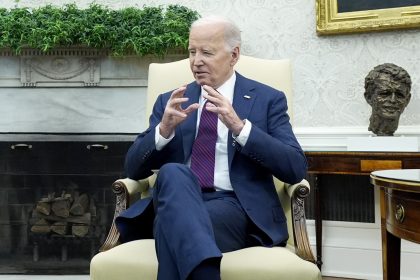Telehealth: The Modern-Day House Call

A dimly lit silver lining surrounding the coronavirus pandemic is telehealth. This could ultimately narrow the disparities so many pregnant women face, said Dr. Alan Fishman, specialty medical officer for maternal fetal medicine at Mednax National Medical Group, during a U.S. Chamber of Commerce event Tuesday.
Telehealth, the ability to remotely visit your doctor, has brought us back to the time of house calls people were used to six to eight decades ago, Fishman explained, and saves the patient time without removing them from their work or childcare duties. For a pregnant woman, who has to take time off work to spend half a day in a waiting room just for a 20-minute consultation, while also paying for transportation or supplement childcare for her other children in order to be at the appointment, this time is irreplaceable.
Barriers to quality care are one of the driving factors for disparities in maternal health care, Fishman said, and these affect people of color and lower-income more than others.
According to the Centers for Disease and Prevention, Black women die of pregnancy-related issues three to four times more than their White counterparts. Even with the typical factors that scholars point to that increase someone’s chances to receive better health care – socioeconomic health determinants like economic status, educational status, health insurance – don’t seem to make that much of a difference when it comes to maternity mortality rates. Black women with a college degree still have a maternal death rate 1.6 times that of a White female who holds only a high school diploma.
These barriers go beyond the typical questions of whether a woman can get a physician or has insurance coverage, he explained, like food insecurity and deciding whether she has to “[put] a meal on the table and [stay] at work versus going to an appointment.”
And U.S. women have a higher maternal mortality rate than any other industrialized country in the developed world, said Rep. Lauren Underwood, D-Ill., who was a registered nurse before her elected position. To address this increasing death rate and the disparities she has witnessed, Underwood helped introduce the Black Maternal Health Omnibus Act of 2021. While there is existing legislation, such as the 12-month postpartum Medicaid coverage, the new bills hope to cover every step of the maternal health crisis from the moment the woman is pregnant to postpartum.
But federal funding has not always been the answer, Fishman pointed out. Even in hospitals that benefit from federally funded programs, he sees a daily struggle to have enough staff and those they do have are often burnt out.
As opposed to a one-size-fits-all solution, Fishman urged lawmakers, as well as the private and public sectors, insurance companies, employers and all stakeholders to think of creative strategies in finding solutions that can begin addressing the disparities at different levels. For example, Mednax has partnered with technology company VSee to use a device that can remotely provide fetal and vital signs monitoring.
Despite most rural areas having unstable internet, and some without internet at all, he said most people at least have one personal device. Telehealth is not the end-all solution, particularly for the systemic disparities within the health care system, but is a start to removing one of the barriers that keep those “at the lower end of the financial totem pole or at various ethnic, racial demographic groups” down, Fishman said.
Dr. Juliette Nevins, clinical solutions medical director at Aetna, raised concerns on the cost of the equipment and even the patient learning how to use it, pointing to New York’s own difficulties in getting students online just for remote learning – let alone mothers having the health literacy to assist in their own prenatal checkup.
Nevertheless, what Fishman is promoting is partnerships and grants for pilot programs that would minimize time barriers and optimize care that would lead to better data. Then, he continued, creating business cases can be made through these examples to get more funding for better health care for all, approaching it through “a million different ways” from policy to technology to innovation.
























